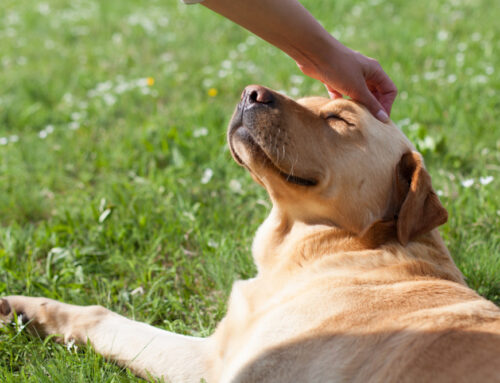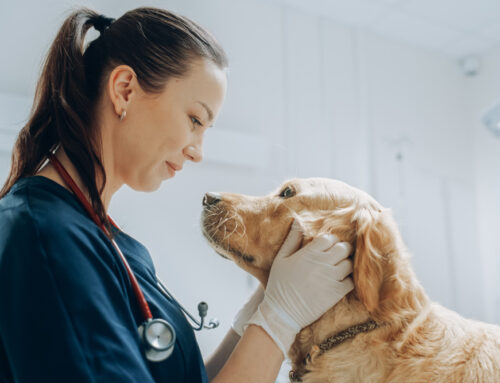Cannabis in Nevada became legal for recreational use effective January 1, 2017, having been legalized by ballot initiative in 2016. Medical marijuana use was legalized by ballot initiative in 2000 and has been available to licensed individuals in the state since shortly after that date.
As laws regarding marijuana use become laxer, people are using marijuana and marijuana laced products more often than before. While there are many medical and recreational benefits of this substance, the number of pets being dosed with marijuana is also increasing. This can be done in several ways, such as putting cannabis oil on their dog food or other products from the pet store. If you have a pet, then there are a few things you should know about this.
Is It Safe?
This topic is just about as hot a debate as the best dog food to give your pet. While it is getting closer to being fully legalized for people in the US (at least medicinally), it is nowhere near ready to be deemed completely safe for animals. There are many individual case studies that have shown the benefits for animals suffering from certain health conditions like behavior-based disorders, including separation anxiety and noise phobia, as well as irritable bowel syndrome and feline immunodeficiency virus infection; for management of pain, nausea, and seizures; and as an appetite stimulate. Cannabis oil is also being used topically to treat tumors.
It is probably safer to use legal industrial hemp products rather than marijuana products for pets since they contain nearly no THC and have high amounts of medicinally valuable CBD and other non-psychotropic cannabinoids, terpenes and terpenoids. There is risk of toxicity and expensive emergency visits if your pet is given too much THC or gets accidentally into marijuana products. Be aware, that many edible cannabis products for humans contain ingredients toxic to pets, such as xylitol, macadamia nuts and chocolate. There have been two cases reported in the literature of dogs dying from marijuana, both of these dogs ingested cannabis products containing chocolate, which appears to have a negative cumulative toxic effect. Always keep our own edibles and your pets’ cannabis products safely stored away from pets and children.
Is it Legal?
It is illegal for any Veterinarian to prescribe marijuana for pets, though they may recommend this for treatment. If you get medicinal marijuana you can use this for your pet, such as in their dog food. However, unless you live in a state where marijuana is legalized or at least decriminalized, it simply is not legal. And no matter what State you live in, the DEA still considers Marijuana to be a Schedule 1 substance (along with heroin, LSD, Ecstasy, etc.)
Hemp vs. Marijuana
There are two main cultivars of Cannabis sativa L., non-psychotropic hemp (high in fiber and CBD, low in THC) and psychotropic marijuana (high THC content). All parts of the cannabis plant have been used for fiber and food by humans since prehistoric times. Cannabis contains hundreds of phytochemicals, and medicinal use of the plant was first mentioned in 2700 BC in the pharmacopeia of Emperor Shen Nung, the father of Traditional Chinese Medicine. Tea from cannabis was prescribed for many different ailments and a combination of alcohol and cannabis was used as an analgesic by Chinese physicians. The therapeutic benefits of phytocannabinoids such as THC and CBD, as well as other phytoconstituents stem from the interactions of these compounds with each other. Different strains of Cannabis sativa L. contain different combinations of these phytochemicals and hence differ in their medicinal benefits.
The body’s endocannabinoid system with its CB1 and CB2 receptors fulfills a major function in maintaining homeostasis within the body (relax, eat, sleep, forget and protect) and is involved in neural activity, pain, memory, emotion, carcinogenesis, and embryonic development. THC binds primarily to CB1 receptors and of all mammals studied, dogs have the highest concentration of these receptors, particularly in brain areas related to coordination. Hence, dogs are more sensitive to THC than other mammals (including humans) and when given too much of THC develop “static ataxia”, a condition where the animal is swaying from side to side, drooling, urinating on itself and acting disoriented.
Therefore, and in dogs, the low-THC hemp plant is much safer to use in pets than the high-THC marijuana strains. Some herbalists believe that hemp may be medicinally superior to marijuana because it is botanically closer to the original plant used for medicinal purposes thousands of years ago, before it became popular to breed high-THC strains for recreation. In our clinic, we have seen beneficial therapeutic results in our patients using CBD products derived from industrial hemp, particularly in pets with arthritic pain and anxiety issues. Other conditions that could benefit from cannabis include seizures, inflammation, dermatitis, cancer and behavioral problems.
Dosing
When many think about using marijuana on dogs, they think about smoking a joint and blowing the smoke in their dogs face. While this could get them high, it is not the ideal way to use marijuana for your pet. This is because it is difficult to judge how much marijuana they are getting and the carcinogens in the smoke is harmful to their health. It can cause respiratory and cardiac issues as well as lead to cancer and other health issues.
Effective therapeutic cannabis doses have not been worked out in pets. It is best to start with the lowest amount possible and to gradually increase the dose every 5 days or so until the desired effect is seen. If undesired side effects such as excessive sedation, disorientation, excitement, vomiting etc. are observed, the cannabis dose is too high, and administration should be stopped immediately. As we were taught in Veterinary School when prescribing a medication, “Start Low and Go Slow!”
There are several cannabis products on the market that can be used for pets. This includes cannabis oil, tinctures, edibles and more. These can either be given to the pet directly or you can mix it into their dog food or treats from the pet store.
How to Buy
To make things simple, you usually get what you pay for, but always check for these four things:
What is the Source of the hemp and CBD?
Try to buy products made from hemp oil that is extracted from a USDA certified organic hemp farm in this country. Many alternative products being offered use Chinese (and sometimes Russian) hemp because it is far cheaper. The problem here is the Chinese and Russian hemp are NOT organic and are often grown in toxic soil in an attempt to “clean” the soil.
Check out the Method of Extraction
Try to find a company that has used CO2 extraction to safely and completely bring the healthy and essential oils out of the plant. Many CBD products on the market utilize toxic solvents to extract the oils – such as butane (yes, lighter fluid) or heavy alcohols. The problem with those methods is that the toxic solvents often remain present in the CBD oil. Another significant issue is that these toxic solvents destroy the health benefits of the hemp oils being extracted. Just think what butane or isopropyl alcohol does to sensitive living plant material. Would you ever drown your broccoli in lighter fluid and then serve it to your family after it supposedly evaporated??
Is the “Whole Hemp Plant” Used?
A great product will use the whole hemp plant AND the hemp seeds to make their CBD products and CBD oil. Some companies only use hemp seeds (again much cheaper) in their products. Hemp seeds do NOT contain any CBD at all. Hemp seeds are an excellent source of protein and Omega 3, 6 and 9 but don’t hold the multitude of healthy cannabinoids found in the plant itself.
What Mixing Agents are used with CBD hemp oil?
CBD hemp oil by itself is very concentrated and has a consistency like molasses so it must be mixed with something in order to be used as an oil. Try to find an oil that is ONLY mixed with organic coconut oil to preserve the health benefits of the hemp oil. Most CBD oils on the market are mixed with ethanol or propylene glycol and often contain flavoring such as peppermint – all of which are potential health hazards for our pets. Those are much cheaper but significantly reduce and even destroy the living and active cannabinoids present in CBD hemp oil.
Last, it is best to speak with your Holistic Veterinarian before adding hemp or marijuana to your pet’s health regimen. We cannot legally prescribe it, but many of us are well acquainted with its properties and uses.
Dr. Sarah Kalivoda, DVM
Mountain View Animal Hospital and Holistic Pet Care
Reno, Nevada
775-853-6900
References:
- Cannabis sativa L: Its Botany and Potential Value to Veterinary Medicine. VBMA Teleseminar July 2015. Robert J Silver DVM, MS, CVA
- Amyloid proteotoxicity initiates an inflammatory response blocked by cannabinoids, Aging and Mechanisms of Disease volume2, Article number: 16012 (2016)










Leave A Comment